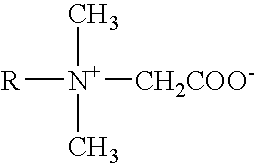Treated filler and process for producing
a filler and treatment technology, applied in the field of treated fillers, can solve the problems of direct contact with time, poor dispersion of silica fillers, and rubber not providing the overall improved performance obtained
- Summary
- Abstract
- Description
- Claims
- Application Information
AI Technical Summary
Benefits of technology
Problems solved by technology
Method used
Image
Examples
example 1
[0130] In a 49,000 gallons stainless steel reactor with a central agitator, 14,000 gallons of sodium silicate with an Na2O concentration of 89 g / l was mixed with 27,000 gallons of water to give 41,000 gallons of sodium silicate solution containing 30.4 g / l Na2O. The central agitator was rotated at 45 rpm throughout the reaction. Live steam was used to raise the temperature of the foreshot to 142° F. (61° C.). The solution was carbonated over 4 hours using a fast-slow-fast carbonation cycle or until the pH of the reactor slurry reached 9.3. 100% CO2 gas was introduced below the turbine blade through a 6″ pipe and the CO2 flow was controlled using a mass flow meter. The CO2 flow rates and the total amount of CO2 used in the reaction are shown below in Table 2.
TABLE 2CarbonationCO2 Flow rates, ft3CycleTime, hoursSTP / minFast0310Fast1310Slow2241Fast3400End4Stop CO2 flowTotal CO275,660ft3 STPconsumption
[0131] The temperature in the reactor increased gradually to 153° F. (67° C.) after 3...
example 1a
[0136] 180 gal of Kason undersize slurry was used to make the control sample (untreated filler) used in Example 1. This 180 gal of slurry was split into three batches of 60 gal. Each 60 gal of slurry was filtered using a Perrin Pilot filter press with 5 plates (Model No: Perrin #200 Chambers: 30 inches×19 plates). Filter press fill pressure was 20 psi. The amount of wash water used was around 250 gallons. The % by weight of silica in the resulting filter cake was 16.5%. The filter cake was introduced directly into a custom built tumbling rotary dryer (Dimensions—48 inches, Length—7.5 inches, Air flow—20 LPM) rotating at a speed of 35 rpm. A temperature of 300° F. (149° C.) was used to dry the filter cake and a flow of air was used to remove the evaporated water from the dryer. After about 3 hours, dry silica pellets with less than 1% moisture by weight were discharged from the rotary dryer. The dry pellets were then screened through −7 mesh and +28 mesh screens to obtain a pellet fr...
example 1b
[0138] The 1 wt % AMS treated filler was prepared by reacting 151 liters of Kason undersize slurry with 170 grams of 27% AMS emulsion at 150° F. (65.5° C.). Upon completion of the AMS addition, the reacted slurry was aged for 15 minutes. After aging, the slurry was neutralized to a pH of 5.5 with concentrated sulfuric acid. The treated slurry was filtered in the filter press with 4 plates as described above. The % by weight of silica in the resulting filter cake was 16.3%. The filter cake was rotary dried as described above. The dry pellets were then screened through −7 mesh and +28 mesh screen to obtain a pellet fraction between 2800 and 600 microns. The dry silica pellets were conditioned in a humidity controlled room maintained at a relative humidity of 50% to raise the moisture content to about 5-6% by weight.
PUM
| Property | Measurement | Unit |
|---|---|---|
| Fraction | aaaaa | aaaaa |
| Percent by mass | aaaaa | aaaaa |
| Percent by mass | aaaaa | aaaaa |
Abstract
Description
Claims
Application Information
 Login to View More
Login to View More - R&D
- Intellectual Property
- Life Sciences
- Materials
- Tech Scout
- Unparalleled Data Quality
- Higher Quality Content
- 60% Fewer Hallucinations
Browse by: Latest US Patents, China's latest patents, Technical Efficacy Thesaurus, Application Domain, Technology Topic, Popular Technical Reports.
© 2025 PatSnap. All rights reserved.Legal|Privacy policy|Modern Slavery Act Transparency Statement|Sitemap|About US| Contact US: help@patsnap.com



